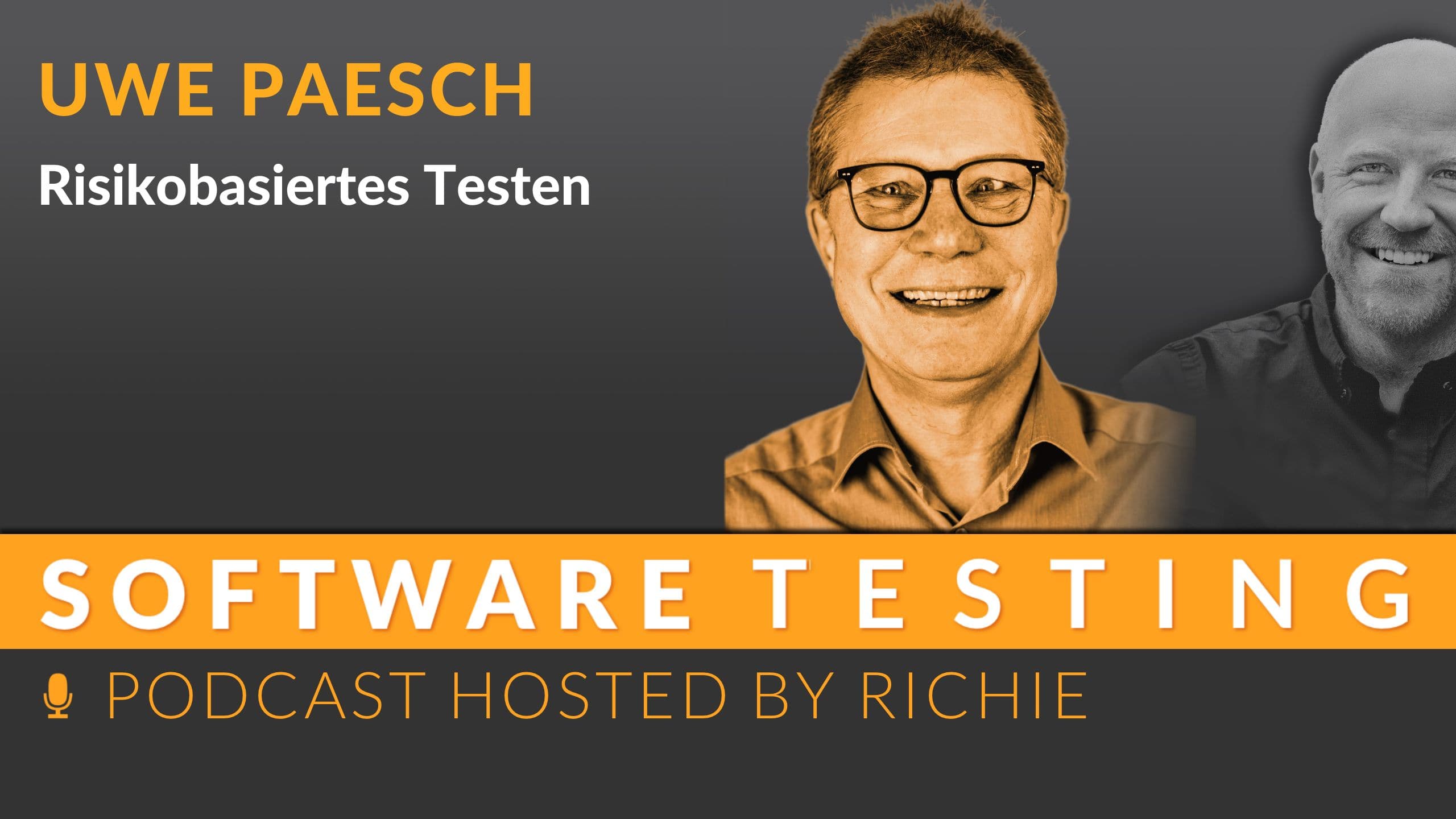Quality in the SAFe environment
The Scaled Agile Framework (SAFe) helps companies to successfully master the agile transformation. However, effective strategies are also needed to...

Experience-based learning is becoming increasingly important in organizational development - especially when it comes to teaching agile principles. One method that is effective here is the use of simulations and games. In realistic scenarios, teams experiment with working models, testing the setting of work-in-progress limits or the effect of T-shaped competencies and then reflecting on their decisions. In a protected learning environment, individual and organizational behaviour patterns can be appraised and re-evaluated. For managers in particular, this opens up a perspective beyond PowerPoint - a path that appeals to intuition and cognition in equal measure.
In this episode, I talk to Andreas Wübbeke and Johanna Maduch about experience-based learning through simulations and games. Instead of gray theory, teams experience the mechanisms of agile working methods first-hand. There is no discussion about what a WIP limit could achieve - you can feel it directly in the game. This provides aha moments, not only for students, but also for management.
"Once you have experienced the mechanisms yourself, the knowledge is much better anchored." - Andreas Wübbeke, Johanna Maduch
Andreas Wübbeke has been Professor of Software Engineering at the Department of Electrical Engineering at the South Westphalia University of Applied Sciences in Soest since mid-2022. He previously worked as Head of the E/E Data Management segment at CLAAS E-Systems in Dissen a.T.w. and as Head of Quality Assurance R&D at Wincor Nixdorf. As a doctor of computer science at the Chair of Databases and Information Systems, he is particularly interested in the agile transformation of companies and the teaching of agile methods in this context.
Johanna Maduch completed her Master of Engineering in "Digital Technologies" in Soest in 2024 and now works as an IT consultant. In her master's thesis, she combined the knowledge from her bachelor's degree in "Design Management and Project Management" and focused on agile project management.
Learning with simulations is an innovative method that enables learners to acquire knowledge through practical experience. The integration of experiential learning methods is becoming increasingly important in today's educational landscape. Simulations create realistic environments in which complex concepts can be learned and tested.
In this article you will discover the following aspects:
Immerse yourself in the world of simulation-based learning and discover how this method can revolutionize learning.
Simulations are interactive models that allow complex concepts to be experienced and learned in a controlled environment. These learning environments offer participants the opportunity to explore practical applications of theoretical knowledge and learn through experience.
An excellent example is the Okaloa Flow Lab. This is a specially developed simulation environment based on agile project management principles. Participants can play through various scenarios to understand the dynamics of teamwork and overcome specific challenges in a protected environment. The use of sports training approaches to define variables improves haptic learning and promotes intuitive understanding.
The differences between classic and agile simulations are crucial to the learning process. Classic simulations tend to use rigid structures, while agile simulations emphasize flexibility and adaptability. In agile formats, time constraints (timeboxing) are often used to increase the reaction speed of teams and optimize collaboration. These approaches help to ensure that learners not only acquire knowledge, but also learn how to apply it in real projects. An example of such an application is the role of the test manager in agile projects, who plays a key role in quality assurance and efficient team collaboration.
Learning with simulations offers numerous advantages that significantly increase knowledge retention compared to traditional methods:
Through interactive and practical approaches, what has been learned is better anchored. Participants can apply theoretical knowledge directly in the simulation, which strengthens memory.
Haptic learning plays a crucial role in fostering an intuitive understanding of complex concepts. By actively interacting with materials or digital tools, learners develop a deeper understanding of the mechanisms behind the theories.
Simulation-based learning methods allow participants to experience real-life scenarios in a low-risk environment. This leads to higher motivation and engagement as learners can immediately see and learn from the consequences of their decisions.
These approaches not only make learning more effective, but also create a foundation for sustainable development and adaptability in professional life. These skills are particularly valuable in times of complexity and uncertainty, which are characterized by the current turnaround.
The integration of agile methods into the design of simulation games opens up new dimensions of learning. Agile approaches promote flexibility and adaptability, which are crucial for success in dynamic learning environments. An Agile Coach can support this by advising teams and managers on agility, communication and process optimization.
The ability of participants to work together and solve problems in a simulated environment enables a deep understanding of agile practices. Conflicts or challenges within the team can be seen as valuable learning opportunities.
Ideas can be tested and discussions held in a safe environment without any real consequences. This encourages an open attitude towards new approaches and improves team performance.
Agility in project management is reinforced through simulation-based learning as participants learn the importance of responding dynamically to change and working effectively as a team.
There are several steps involved in running an effective simulation game to ensure that the learning objectives are met. Key elements that make a simulation effective include:
These form the basic framework of the game, enabling interactions between participants and encouraging strategic thinking. The choice of mechanics directly influences the team dynamics and the course of the game.
Good interaction within teams is crucial. Players need to communicate, collaborate and adapt their strategies to succeed in the game.
Another important aspect of simulation game design is retrospective analysis. After completing a simulation, participants gather feedback and reflect on their experiences. This process includes:
This continuous improvement ensures that each new game is more effective than the last. Such analyses not only help to identify specific problems, but also to generate new ideas for the further development of the game.
Simulations enable an interactive learning environment, but this also brings challenges.
Team conflicts can occur during simulations. These conflicts often arise due to different views or strategies within the team members. Such disputes have a direct impact on the learning process as they can affect both communication and collaboration. An open discussion climate is crucial to resolve these conflicts in a safe environment.
Management understanding plays a central role in the success of simulation-based learning. Managers should understand the different roles and dynamics within their teams. An in-depth knowledge of agile practices, enables managers to better respond to the needs of their team members and provide targeted support. This not only promotes the individual growth of the participants, but also contributes to the overall performance improvement of the team.
Addressing conflict and understanding roles promotes a deeper insight into how teams function and develop within the context of simulations. In this context, AI Skills are of great importance for testers, especially in agile teams where flexibility and efficiency are required.
Industrial applications of simulations show how companies can achieve competitive advantages through targeted problem-solving strategies. Implementing simulation-based learning methods enables organizations to overcome complex challenges and develop tailored solutions. Examples of this are
A leading vehicle manufacturer used simulations to optimize production processes. By analyzing bottlenecks, adjustments were made that increased efficiency and reduced costs.
A simulation was used in a hospital to train emergency scenarios. Doctors and nursing staff practiced dealing with critical situations, which led to a significant improvement in response times during real emergencies.
A logistics company used simulations to improve supply chain management. By testing different scenarios, the company was able to identify bottlenecks and develop strategies to minimize delays.
These approaches illustrate the versatility of simulations in the learning process and their ability to address real-world problems in industry. Such applications not only promote the understanding of complex concepts, but also strengthen team dynamics and decision-making in stressful environments.
An example of the use of simulations in software testing shows how AI and agile transformation will change the future of software testing.
The future of simulations in education is promising. Simulation games provide an innovative platform to learn complex concepts in a risk-free environment. Their role in modern education cannot be overstated.
These developments promise not only to improve knowledge retention, but also to enhance team dynamics and problem-solving skills. Collaboration with institutions such as Okaloa Flow Labs shows that the integration of agile mechanisms and tools into simulations is crucial for the success of modern learning.
Simulations in the learning context are interactive learning environments that enable participants to experience practical applications of knowledge in realistic scenarios. One example of this is the Okaloa Flow Lab environment, which serves as an effective learning simulation.
Learning with simulations improves knowledge retention compared to traditional methods, as it promotes haptic learning and enables an intuitive understanding of complex concepts. Simulation-based methods also offer practical training opportunities.
Agile methods are integrated into the design of simulation games to increase the flexibility and adaptability of learning processes. Team dynamics play a crucial role in the success of these learning methods.
Central elements of an effective simulation include clear game mechanics and the promotion of team interaction. In addition, retrospective analysis is important for the continuous improvement of future games.
Challenges can be team conflicts that arise during simulations and interfere with the learning process. A deep understanding of the roles within the team is crucial for managers to take full advantage of simulation-based learning.
In industry, simulations are used to identify problems and develop customized solutions. Case studies show how companies have achieved significant improvements through simulation-based learning.

The Scaled Agile Framework (SAFe) helps companies to successfully master the agile transformation. However, effective strategies are also needed to...

Informal networks play a crucial role in software development and testing. These spontaneous connections help improve team collaboration, trust and...

Risk-based testing can help to significantly improve test coverage in software projects and minimize potential risks in testing, especially in the...